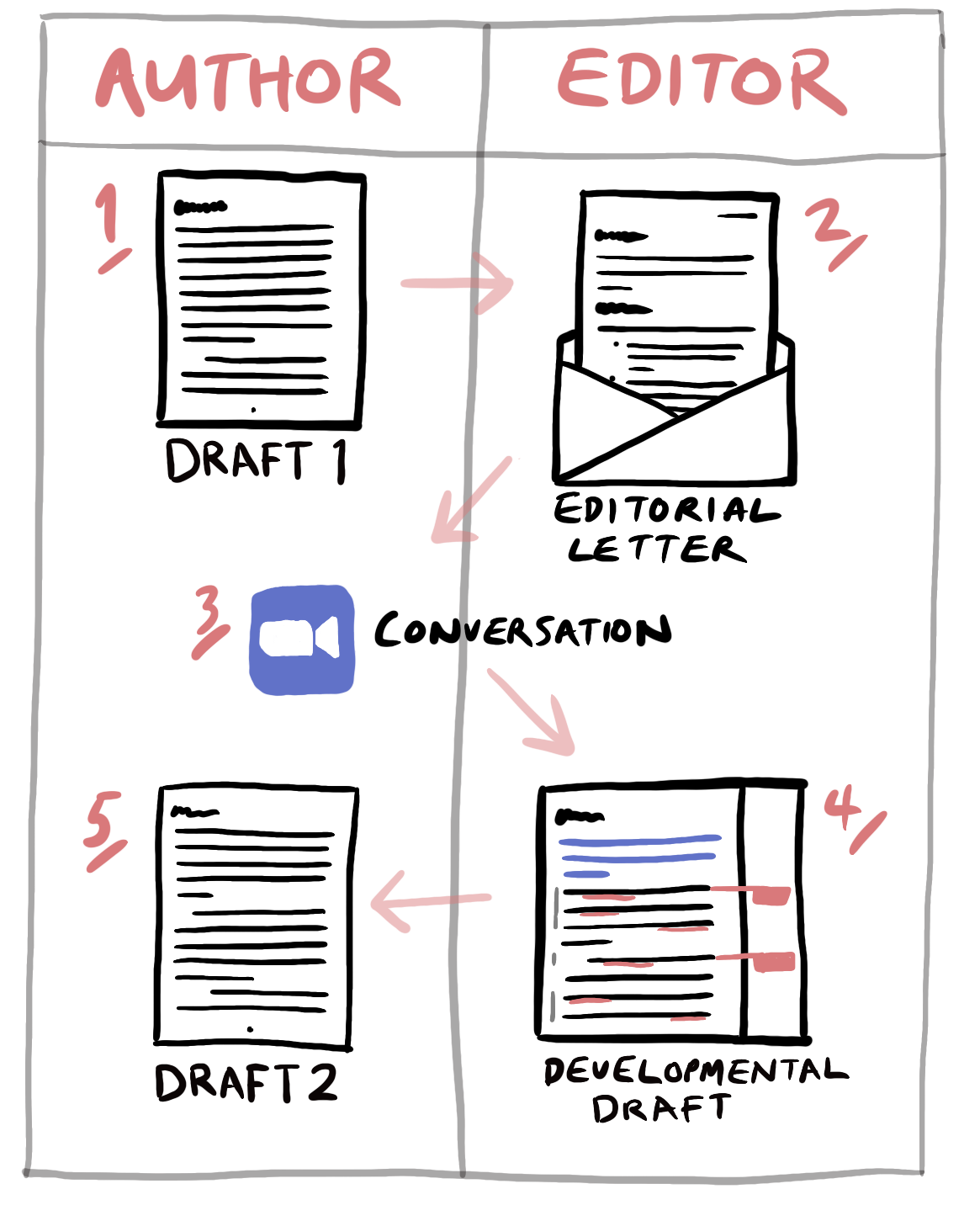Developmental Editing
I tend to think about developmental editing (and its relationship to line editing) in terms of scale:
Developmental editing is large-scale. It’s concerned with the big picture: at its smallest, it takes the paragraph at its unit, and at its largest the chapter or even the book.
Line editing is small-scale. It pays some attention to paragraphs, but mostly operates at the level of the sentence, and sometimes the word.
It can also be helpful to think about this distinction in terms of outcomes:
Developmental editing aims to produce a revised draft in which each chapter, section, and paragraph has a clear argument that’s supported by strong evidence and an effective structure.
Line editing aims to produce a revised draft in which the sentences are clear, concise, and correct.
Process
Developmental editing can work in a number of different ways, but here’s one step-by-step process that I’ve used with a number of authors.
You send me Draft 1 of the article or chapter. Sometimes this is a first full draft or a partial draft; sometimes it’s a draft that has already been through peer review.
I read the draft and produce an Editorial Letter, which provides feedback and suggestions, focusing on:
Structure
Argument
Evidence
We have a conversation to talk through the suggestions and questions in the editorial letter.
On the basis of that conversation, I produce a Developmental Draft, which executes some of the changes we talk about and gives guidance on how you can execute others.
Working with the Developmental Draft, you then produce Draft 2.
What is an editorial letter?
The goal of the editorial letter is to make visible your draft’s argument, evidence, contribution, and structure, and to provide concrete suggestions on how to make improvements in these areas
For an article-length piece of writing, an editorial letter is usually 7–10 pages single-spaced. It includes a section-by-section structural summary, an overview of the argument and contribution, and paragraph-by-paragraph suggestions. The editorial letter is often the basis for a conversation between editor and author, but authors can also go directly from editorial letter to revised draft.


